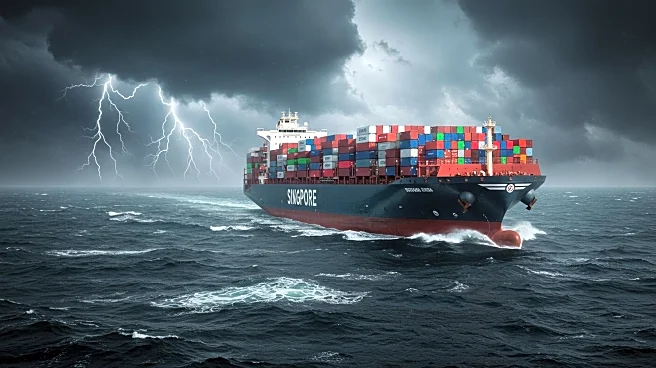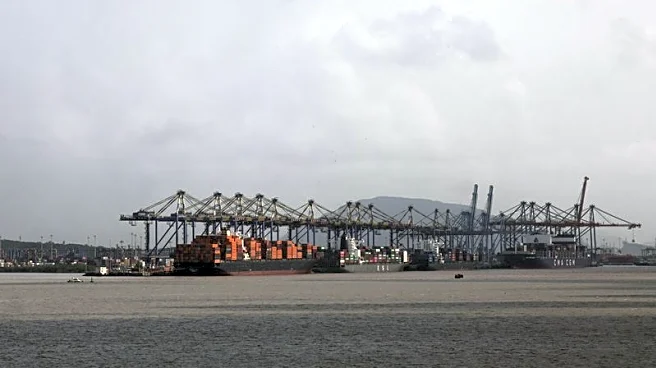What's Happening?
President Trump has enacted a 50% tariff on steel and aluminum imports, significantly affecting the cost of hundreds of items entering the United States. Previously excluded items such as deodorant, butter knives, baby strollers, and fire extinguishers are now subject to these tariffs. This move is part of a broader strategy to protect domestic industries and reduce dependency on foreign materials. The tariff is expected to increase the cost of goods for American consumers and businesses, potentially leading to higher prices in various sectors.
Why It's Important?
The imposition of these tariffs is likely to have a substantial impact on the U.S. economy, particularly in manufacturing and consumer goods sectors. By increasing the cost of imported materials, domestic producers may face higher production costs, which could lead to increased prices for consumers. This policy aims to bolster American manufacturing by encouraging the use of domestic materials, but it may also strain international trade relations and lead to retaliatory measures from affected countries. The broader economic implications include potential shifts in supply chains and increased pressure on industries reliant on imported goods.
What's Next?
The implementation of these tariffs may prompt responses from international trade partners, potentially leading to negotiations or trade disputes. Businesses affected by the increased costs may seek alternative sources for materials or adjust their pricing strategies to accommodate the new tariffs. Additionally, policymakers and industry leaders will likely monitor the economic impact closely, assessing whether the tariffs achieve their intended goals of strengthening domestic industries without excessively burdening consumers.
Beyond the Headlines
The decision to impose tariffs reflects ongoing debates about protectionism versus free trade. While intended to support domestic industries, such measures can have complex repercussions, including potential job losses in sectors dependent on affordable imports. The long-term effects on consumer behavior and industry competitiveness remain uncertain, highlighting the delicate balance policymakers must navigate between economic protection and global trade dynamics.












